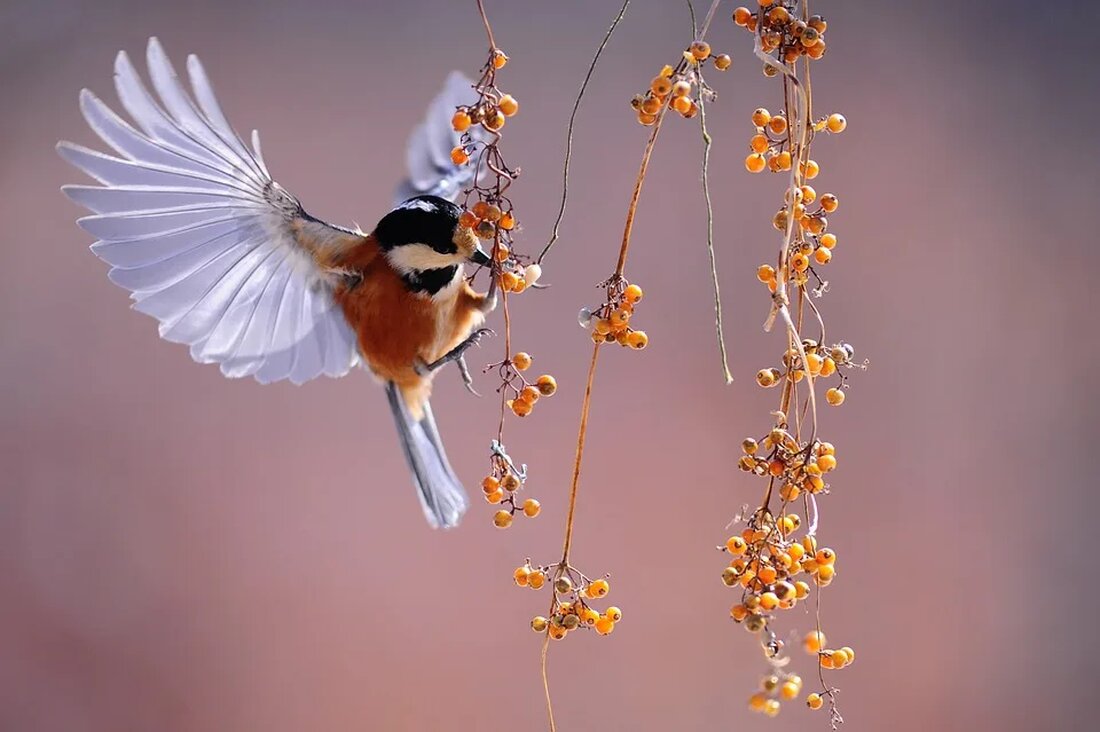How birds help spread plant seeds
The role of birds in plant dispersal Birds play an important, often underestimated role in the dispersal of plant seeds, making them an essential component for the survival of many ecosystems. In this article we will take a closer look at the methods and mechanisms that birds use in seed dispersal and highlight their importance for the plant world. Plant Seed Dispersal by Birds: An Overview Plant seed dispersal by birds, known as ornithochory, is a seed dispersal mechanism seen worldwide. Because of their high degree of mobility and their ability to fly long distances, birds are efficient seed dispersers. They contribute to…

How birds help spread plant seeds
The role of birds in plant dispersal
Birds play an important, often underestimated role in the dispersal of plant seeds, making them an essential component for the survival of many ecosystems. In this article we will take a closer look at the methods and mechanisms that birds use in seed dispersal and highlight their importance for the plant world.
The Dispersal of Plant Seeds by Birds: An Overview
Plant seed dispersal by birds, known as ornithochory, is a seed dispersal mechanism seen worldwide. Because of their high degree of mobility and their ability to fly long distances, birds are efficient seed dispersers. They help plants colonize new habitats, increase the diversity of the plant world and strengthen agriculture.
Plants produce fruits and seeds with the main goal of spreading and reproducing their species. Some of these fruits and seeds are attractive to birds, either because of their color, taste or nutritional value. Birds consume the fruits and seeds and later disperse the indigestible seeds to another area. This process of ingestion, digestion and excretion of seeds is called endochory.
Methods of seed dispersal by birds
Depending on the species and behavior of the birds, they can disperse seeds in different ways. Here are some of the most common methods they use:
Endochory
As previously mentioned, endochory is the most common method by which birds pass seeds through their digestive tract and later excrete them. This dispersal method has the advantage that the seeds can be transported far from the mother plant, increasing the chances of successful germination and growth.
Epichoria
In epiphory, the seeds attach to the bird's feathers or feet and later fall off when the bird moves or preens itself. This method does not require digestion of the seeds, meaning it can be beneficial for plants that produce hard, indigestible seeds.
The importance of plant seed dispersal by birds
Seed dispersal by birds is of great importance for maintaining biological diversity. Birds contribute to the distribution of a variety of plant species, thereby increasing biodiversity in many ecosystems. They are often responsible for the spread of invasive species, but can also contribute to the recolonization of areas damaged by natural disasters or human activities.
Additionally, seed dispersal by birds allows plants to expand into new habitats where they might not otherwise survive. This can lead to the development of new plant communities and help mitigate the effects of environmental change and degradation.
Differences in nutritional behavior
It is important to note that different species of birds have different preferences when it comes to their food source. While some species live exclusively on animal food, others are omnivores and still others feed primarily on plants. These differences in feeding behavior have a more direct impact on bird species' potential for seed dispersal.
Frugivorous (fruit-eating) birds are particularly valuable seed dispersers. Since their main diet consists of fruits, they regularly consume seeds, thereby contributing to seed dispersal.
Impact on agriculture
Birds also contribute to seed dispersal in agricultural systems. They can help spread crops and colonize new agricultural areas. However, they can also contribute to the spread of weeds and invasive species, which can be problematic for farmers.
Impacts of climate change and habitat loss
Climate change and habitat loss have a major impact on both birds and plants. The change in habitats can lead to some bird species losing their habitat and thus their role as seed dispersers. At the same time, climate change may cause some plants to adapt their fruit and seed production or cause some seeds to be unable to germinate in new climates.
Conclusion
Birds play an important role in the dispersal of plant seeds. Not only do they help increase biodiversity and colonize new habitats, but they also have a significant impact on agriculture and plant survival in times of climate change and habitat loss. Their activity as seed dispersers is invaluable to our ecosystems and another reminder of the importance of protecting and conserving our bird species.

 Suche
Suche
 Mein Konto
Mein Konto
